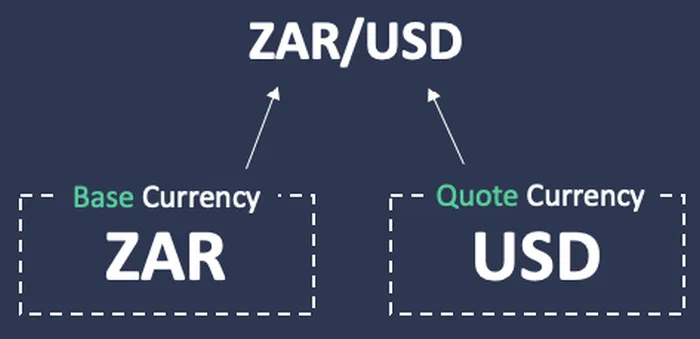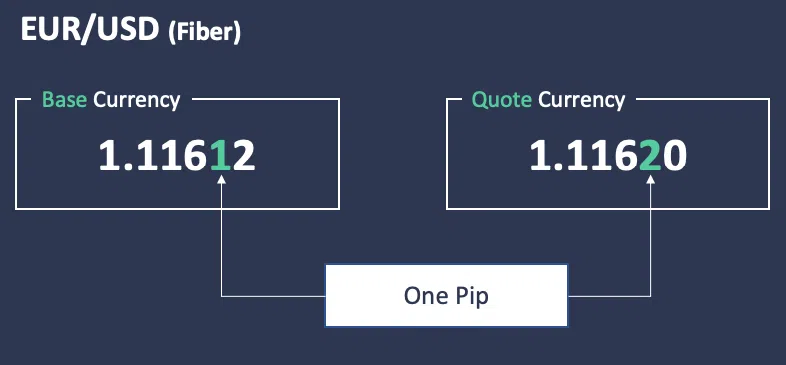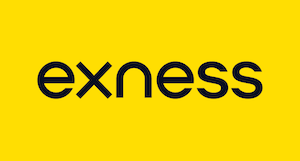-
Best Forex Brokers
Our top-rated Forex brokers
-
Brokers for Beginners
Start trading here
-
Islamic Account Brokers
Best accounts for Muslim traders
-
Forex Demo Accounts
Learn to trade with no risk
-
No-deposit Bonuses
Live trading with no deposit
-
KES Trading Accounts
Save on conversion fees
-
ECN Brokers
Trade with Direct Market Access
-
Lowest Spread Brokers
Raw spreads & low commissions
-
Market Maker Brokers
Fixed spreads & instant execution
-
MetaTrader 4 Brokers
The top MT4 brokers in Kenya
-
MetaTrader 5 Brokers
The top MT5 brokers in Kenya
-
TradingView Brokers
The top TradingView brokers
-
cTrader Brokers
The top cTrader brokers in Kenya
-
All Trading Platforms
Find a platform that works for you
-
Copytrading Brokers
Copy professional traders
-
Forex Trading Apps
Trade on the go from your phone
Forex, derived from foreign exchange, is the process of exchanging one currency for another. While foreign exchange is standard in international business, Forex trading is also a popular form of investing for private citizens, called retail traders, in Kenya.
The Forex market is the largest and most liquid financial market in the world, with a daily trading volume of approximately 724 614 trillion Shilling (6.6 trillion USD – 2019). And Forex trading is buying and selling currencies on this market. A forex trader will buy a currency at the current market price and sell it again at a target price in the future. Because currency prices are always changing, the purchase and the sale price will be different, and the difference between the two prices will be the trader’s profit or loss.
It is only because of this market volatility that Forex traders can make a profit. Even though the Forex market operates 24 hours a day, market volatility tends to peak during the regular opening hours of the stock markets in Sydney, Tokyo, London and New York. The highest volume of trading generally occurs at the overlap of the London and New York opening hours, and this is when Forex traders are most active.
The only way for retail traders to access this international market if via an intermediary called a Forex broker. A Forex broker will provide the trading software and market access for their clients, so a trader can do market research and buy and sell currencies. These are our top four choices of brokers for beginner traders.
Components of a Forex Trade
A Forex trade has four main components – the asset, the size of the trade, the price, and the direction (buy or sell). Each of these is unique and affects the profitability of the trade.
The Asset: Currency pairs
In Forex trading, the asset is always a set of two currencies called a currency pair. Currencies are quoted in pairs, as the two currencies in a pair are bought and sold simultaneously. An example pair is the EUR/USD (euro/U.S. dollar).

The first currency of any pair is called the base currency and the second currency is called the quote currency. In the ZAR/USD, the Rand is the base currency and the US Dollar is the quote currency. 
The price: Forex quotes
The value of a currency is called a quote or a price. As currencies are quoted in pairs, the value of the quote currency is set in relation to the base currency.
For example, if the EUR/USD is priced at 1.1332, it means that 1 euro can be exchanged for 1.1332 US dollars. In Forex trading, the change in price of one currency relative to another is what generates a profit or loss.

Pips: Calculating price fluctuation
Price fluctuation (or the difference between two prices) is often measured and expressed as a value in pips. A pip is a small change in the value of a pair and is measured in the 4th decimal place; for example, if the EUR/USD trades at 1.1332, a one pip price increase would move the exchange rate to 1.1333.
There are exceptions to this rule, the most notable being Japanese yen quote pairs, such as USD/JPY, where a pip is a change in the 2nd decimal place.
Calculate It Yourself!
Quotes and Spreads: Ask price, bid price and trading costs
The value of a currency pair is expressed using a two-price quotation system: One price is for buying – or going long – and is called the ask price, this will be slightly above the market price. The other price is for selling – or going short – and is called the bid price, this will be slightly below the market price. The prices are set by your broker and the difference between the two is called the spread.
It’s best to see the spread as a broker’s fee for using its trading platform. The spread is measured in pips and is often the largest component of your trading costs. The spread is typically different for each currency pair and is influenced by factors like the pair’s liquidity, the broker’s mark-up and the broker type. Some brokers offer very tight spreads, often based on the raw interbank rate, and in these cases you will pay commission on every trade.
Here is an example of a 1-pip spread on the EUR/USD pair:
- Bid price:1.1332
- Ask price:1.1333
The ask price minus the bid price = 0.0001 = 1 pip.
Trade size: Lots, mini lots, micro lots and nano lots
The size or volume of a trade is measured in lots. This is similar to how stocks (equities) are measured in shares and gold, which is measured in ounces.

One standard lot is 100,000 units of a currency pair. So, if you buy one standard lot of the EUR/USD, you’re entering a trade worth 100,000 euro (which is more than USD 100,000).
One mini lot is 10,000 units of a pair. A mini lot of the EUR/USD is worth 10,000 euro.
One micro lot is 1,000 units of a pair. A micro lot of the EUR/USD is worth 1000 euro. In most cases, a micro lot is in most cases the smallest trade you can place, though some brokers will offer nano lots of for smaller account types.
If you don’t know how to calculate the correct lot size for your trades or if you need help in calculating the pip-value for a certain lot size, take a look at How to Place My First Forex Trade.
Leverage: Amplifying exposure but increasing risk
Trading with leverage involves borrowing money from a liquidity provider to greatly increase the size of your trade. A trader will place a small deposit, known as the margin, and the rest of the trade value will be leverage. Your profit or loss will be based on the full value of the trade, not just your margin.
Most CFDs are traded with leverage because they allow traders to open much larger positions than their account balance would normally allow.

Using high leverage can increase your profit potential considerably but will also considerably increase your risk. Traders who use excessive leverage are exposing themselves to significant losses.
Here is an example to demonstrate how leverage can be used to place larger trades with less capital:
Let’s say you have a small trading account of USD 100. You have access to leverage of 1:500. You place a trade of 0.1 lots (one mini lot) on the USD/JPY pair. One mini lot is 10,000 units of the pair, which means the value of your trade is USD 10,000. Although the notional value of the trade is USD 10,000, only USD 20 of your account is engaged in opening the trade because 1:500 leverage means that you need to put down only 0.2%* of the notional amount of the trade.
*This example doesn’t consider the extra margin required to sustain a position with a floating loss.
Trade direction: Going long or going short
We touched on going long and going short earlier, but let’s look at what we mean in more detail.
CFD traders can speculate on whether an asset will increase or decrease in value and can profit either way. Profiting from the decreasing value of an asset is unique to CFD trading.

Long is the term used for buying, where the trader speculates that the price of the base currency will rise relative to the quote currency. In simple terms, you will make money from a long (buy) position if the price of the currency pair rises.
Short is the term for selling, where the trader speculates that the price of the base currency will fall relative to the quote currency. In simple terms, you will make money from a short (sell) position if the price of the currency pair declines.
Example – trading 1 micro lot on the EUR/USD
Let’s say your trading account which is funded with USD 1000 and your account’s leverage is 1:100. The EUR/USD currency pair is trading at 1.20000. You speculate that the EUR will increase in value against the USD and you buy 1 micro lot at 1.20000. You set a stop loss at 1.19000 (100 pips below your entry price) and a take profit at 1.23000 (300 pips above your entry price). One micro lot (0.01 lots) is worth EUR 1,000, which is equivalent to USD 1200 in this scenario. As your account’s leverage is 1:100, only USD 12 of your account is used to open the position*.
*Extra margin is required to sustain a floating loss.
If your trade is correct
The euro strengthens against the U.S. dollar and hits your profit target at 1.23000. The 1000 euro you initially bought for USD 1200 is sold for USD 1230, which means you’ve made a profit of USD 30.
Another way to calculate your profit is to multiply the number of pips you’ve made by the pip value of a micro lot, which is USD 0.10 on the EUR/USD. So, 300 pips multiplied by USD 0.10 gives you a profit of USD 30.
If your trade goes wrong
The euro weakens against the U.S. dollar and hits your stop loss at 1.19000. The 1000 euro you initially bought for USD 1200 is sold for USD 1190, which means you’ve lost USD 10 on the trade.
Another way to calculate your loss is to multiply the number of pips you’ve made by the pip value of a micro lot, which is USD 0.10 on the EUR/USD. So, 100 pips multiplied by USD 0.10 gives you a loss of USD 10.
What affects currency exchange rates?
Like all markets, currency prices are set by supply and demand. But the constant shifts in supply and demand of the dozens of frequently traded currencies makes the Forex market more complex than most. Happily, there a few indicators that traders can use to help them predict price movement.
Central Bank Economic Policy
National economic policy, set by central banks such as the Bank of England in the UK or the Federal Reserve in the USA, can have major effects on currency prices. Following the 2008 crash, some central banks engaged in quantitative easing, or increasing the supply of money in circulation, which causes a currency’s price to drop. On the other hand, raising interest rates (usually used to combat inflation) will cause a currency’s price to increase as this leads to higher investor demand.
If economic policy changes without warning it can create major fluctuations in currency value. In 2015 the Swiss National Bank (SNB) abruptly scrapped the Swiss Franc’s peg to the Euro with no warning. This resulted in a huge increase in the value of the franc versus the euro – moving from 1.2 CHF/EUR to 0.86 within hours of the news.
Current Events
Current events can also affect the price of a currency. The ongoing Brexit debacle in the United Kingdom is a perfect example: Large investors like to move money into strong, predictable economies; so as Brexit uncertainty continued institutional investors moved their capital out of the country, decreasing demand for the GBP and causing it to lose value. Once it appeared that the British Parliament had successfully agreed on a Brexit deal, the value of the GBP rose again.
You can see this effect anywhere you look in the world, if a good piece of economic news appears about a nation-state, its currency will increase in value. If the news is negative, the currency’s value will decrease. As a rule, the better health a country’s economy is in, the stronger and more stable its currency will be.
Trading Strategy
In Forex trading there is no “best” strategy – the strategy that works for you will be dependent on your personality and lifestyle.
All trading strategies will require you to engage in market analysis in order to be successful. Market analysis can be grouped into two general types; fundamental analysis and technical analysis.
Fundamental Analysis
Fundamental analysis is the study of macroeconomic trends and their effects on price, this form of analysis requires a sound knowledge of economics and current events. In the broadest sense, Fundamental traders try to buy currencies from stronger economies at a low price and sell currencies from underperforming economies.
Fundamental traders are often reliant on scheduled news events that alter currency price. A good example is the Non-Farm Payroll (NFP) report in the United States; the NFP is released on the first Friday of every month and details how many jobs have been added or lost in the US economy. It’s generally seen as a good bellwether of US economic health and if the figure is higher or lower than expected then we will see increased volatility in the Forex market.
Fundamental analysis can be tough for traders unfamiliar with finance data but for traders who have a firm grasp of the financial news, and understand macroeconomics, this is a very successful approach.
Technical Analysis
Technical analysis is the prediction of future price action based on historical price data. Technical traders make heavy use of charts and will often rely on a variety of tools and indicators to help them identify trends and patterns. Almost all technical analysis is based in Dow Theory, a set of principles laid down in the 19th century by Charles Dow to describe and predict the movement of the stock market.
The most common form of technical analysis is price action trading, which is essentially the analysis of the actions of all the other market participants. Price action traders believe that market psychology is the main driver of price: They believe that there are many reasons for price movement, but that ultimately, its traders’ reactions to developments.
Technical analysis can be tough to learn, but once you have a good understanding of the basics it can be used in any financial market, not just the Forex market.
Analytical Tools
All good traders will use a combination of fundamental and technical analysis to find opportunities in the Forex market and there are several great tools we recommend to get you started:
- Autochartist: is a lightweight technical analysis tool that can be plugged directly into your trading platform. It analyses trends in price action and highlights trading opportunities based on automated technical analysis across a huge number of Forex pairs.
- Trading Central: A more robust analysis database that contains over 8,000 assets, including stocks, commodities and Forex pairings. Analysis, both technical and fundamental, provides data and commentary on each asset.
- TradingView: An intuitive and advanced financial visualisation platform and active social network for traders and investors. In addition, TradingView offers a huge number of HTML5 charts, stock screeners, hundreds of pre-built technical analysis indicators and a built-in news feed.
Whatever form of analysis you focus on, these tools will help you find your feet and do a lot of the hard work for you – especially on the technical side. Once you get to grips with technical analysis you will probably want to start customising your platform with indicators and algorithmic trading bots that can automate your trading strategy.
Conclusion
Some of these terms and concepts might be tricky to understand at first but it won’t take you long to get it when you see it in action. The best way to learn the basics of Forex trading is to practice on a demo account and place a few trades. Some brokers have local support teams, work with local banks, and offer support.
We still have plenty of good information waiting for you! Take a look at the articles below to further develop your skills and knowledge…
Essential reading
- The essential guide to learning Forex trading successfully is a must-read for any aspiring Kenyan trader.
- How to place my first Forex trade.
Expect to learn a lot before trading profitably. You need to learn how to operate the software, do analysis, and manage the risk in the account. We have an education section to continue reading and explore many of the principles to succeed in trading. Here are articles most relevant to getting a good start.
- Technical Analysis vs Fundamental Analysis
- Pips are used for measuring changes in currency value. But how?
- Leverage can be used to grow your profits. Learn to calculate leverage needed
- Charts – Understanding Bar Charts, Volume & Time Comparisons
- How should I manage my risk with Stop Loss and Take Profit?
- Pivot points are a change in the direction of the market. Learn more about them for your trading.
- Forex Analysis Tools are crucial to success. Here are some of the more common ones
































